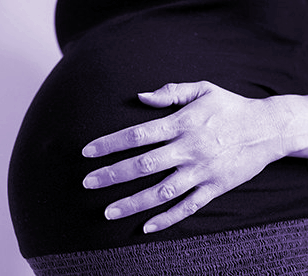Fracking pregnancy link probed
 Researchers have found a link between living near fracking sites while pregnant and issues with infant development.
Researchers have found a link between living near fracking sites while pregnant and issues with infant development.
Experts have looked at close to 35,000 pregnancies over six years in Canada, and say that living for one year preconception and/or having a baby develop within 10km of at least one fracking site is more likely to have major congenital anomalies and be small for their gestational age.
Additionally, the researchers found the risk of spontaneous preterm birth and being small for gestational age were increased in those living with 100+ wells in that 10km border.
This kind of study cannot directly prove that fracking caused the issues, but the researchers say that because their results were adjusted for numerous confounding issues, it might be a good idea to be wary around unconventional oil and gas development if intending on becoming pregnant.
Dr Alex Polyakov - a clinical Associate Professor of medicine at the University of Melbourne, who is also clinical director of Melbourne IVF at the Royal Women’s Hospital - says they are some highly intriguing findings.
“It must be stressed that it is not fracking itself that may be responsible to adverse pregnancy outcomes, but rather toxic chemicals that escape into the environment through air pollution and possibly groundwater,” Dr Polyakov says.
“It is also worth noting that a statistical association may not indicate causation. In other words, fracking may not be responsible for the association with adverse pregnancy outcomes, but fracking may be more common in areas which may have increased risk of adverse pregnancy outcomes for a different reason, such as low household income may be more common in areas with a high concentration of fracking sites and may in fact be the main cause of adverse pregnancy outcomes observed.”
Also, he notes that in Australia, fracking is not nearly as widespread as it appears to be in Canada.
“Most fracking shafts are also situated in sparsely populated locations, and it would be highly unusual to find multiple fracking sites in close proximity to residential areas, even in the rural setting.
“Therefore, I would urge caution in applying the findings of this study to the Australian setting. A policy of not having fracking sites too close to each other (within 10 kilometres of one another) may be a viable policy alternative that would address the issues raised in this study.”








 Print
Print